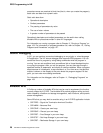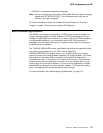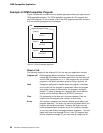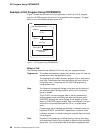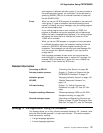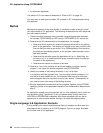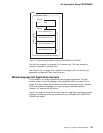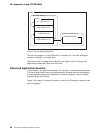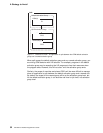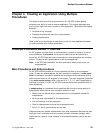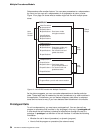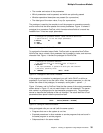ILE Application Using CRTRPGMOD
An advanced application
The effect of ILE is the same as described in “Effect of ILE” on page 26.
You may want to read about the basic ILE concepts in
ILE Concepts
before using
this approach.
Method
Because this approach is the most flexible, it includes a number of ways in which
you might create an ILE application. The following list describes the main steps that
you may need to perform:
1. Create a module from each source member using the appropriate command,
for example, CRTRPGMOD for RPG source, CRTCLMOD for CL source, etc..
2. Determine the ILE characteristics for the application, for example:
Determine which module will contain the procedure that will be the starting
point for the application. The module you choose as the entry module is the
first one that you want to get control. In an OPM application, this would be
the command processing program, or the program called because a menu
item was selected.
Determine the activation group the application will run in. (Most likely you
will want to run in a named activation group, where the name is based on
the name of the application.)
Determine the exports and imports to be used.
3. Determine if any of the modules will be bound together to create a service
program. If so, create the service programs using CRTSRVPGM.
4. Identify the names of the binding directories, if any, to be used.
It is assumed with this approach that if you are using a binding directory, it is
one that is already created for you. For example, there may be a third-party
service program that you may want to bind to your source. Consequently, all
you need to know is the name of the binding directory.
5. Bind the appropriate modules and service programs together using CRTPGM,
specifying values for the parameters based on the characteristics determined in
step 2.
An application created using this approach can run fully protected, that is, within its
own activation group. Furthermore, it can be updated easily through use of the
UPDPGM or UPDSRVPGM commands. With these commands you can add or
replace one or more modules without having to re-create the program object.
Single-Language ILE Application Scenario
In this scenario you compile multiple source files into modules and bind them into
one program that is called by an ILE RPG program. Figure 8 on page 29 shows
the run-time view of this application.
28 ILE RPG for AS/400 Programmer's Guide



